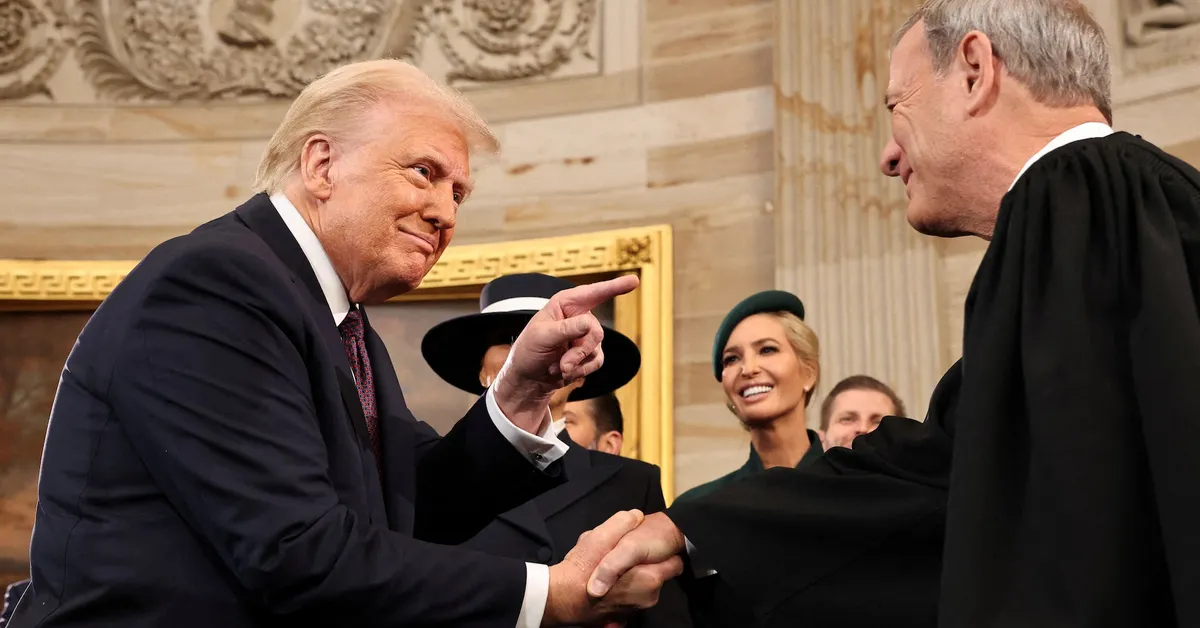
Since their initial interactions in 2015, the relationship between Donald Trump, the former president of the United States, and John Roberts, the chief justice of the Supreme Court, has been a notable example of political tension. Trump, a businessman turned politician, publicly criticized Roberts for his ruling on the Affordable Care Act—commonly known as Obamacare—calling him "disgraceful," "disappointing," and "an absolute disaster." This harsh rhetoric set the stage for a complex dynamic that would evolve over the years.
In early 2017, the tension momentarily dissipated during Trump's inauguration on the steps of the U.S. Capitol, where Roberts administered the presidential oath. The event was marked by smiles and handshakes, yet beneath the surface, the relationship was fraught with underlying conflicts. As Trump enacted his policies, often with little regard for judicial dissent, the clash of authority between the executive and judicial branches became increasingly evident.
The latest chapter in their complicated relationship unfolded when Roberts issued a rare public statement rebuking Trump for suggesting the impeachment of a federal judge. This judge had ruled against the administration regarding deportation flights, prompting Trump to call for impeachment. Roberts emphasized that impeachment should not be used as a tool for disagreement with judicial decisions, reiterating a long-standing principle upheld for over two centuries.
Roberts, who is considered a conservative, has also shown a commitment to the institutional integrity of the Supreme Court. His rebuke of Trump has drawn criticism from Trump’s supporters and comes at a time when the court is bracing for legal challenges related to numerous executive actions taken by Trump. According to Richard Friedman, a law professor at the University of Michigan, it's likely that Roberts harbors contempt for Trump’s treatment of judges and his disregard for judicial norms.
Throughout Trump's presidency, his relationship with Roberts has been marked by both significant legal victories and setbacks. Trump appointed three justices during his term, creating a 6-3 conservative majority on the Supreme Court. This majority enabled the court to deliver critical rulings that rolled back abortion rights, expanded gun rights, and curtailed federal regulatory power. However, Roberts has also joined the court's liberal justices on several occasions, illustrating the unpredictable nature of their interactions.
Among the notable rulings authored by Roberts, he upheld Trump's controversial travel ban targeting several Muslim-majority countries, a decision celebrated by Trump as a major achievement. Conversely, Roberts has also ruled against Trump, such as blocking his attempt to add a citizenship question to the national census and allowing a New York prosecutor to access Trump's financial records.
This isn’t the first time Roberts has publicly stood against Trump’s rhetoric. In 2018, after Trump referred to a judge appointed by Barack Obama as an "Obama judge," Roberts reaffirmed the independence of the judiciary, stating, "We do not have Obama judges or Trump judges." Such statements emphasize Roberts' commitment to maintaining the integrity of the judicial system amidst the political turmoil.
As legal challenges mount against Trump’s administration, many legal scholars, including Raymond Brescia from Albany Law School, speculate that the future of the Supreme Court's authority is at stake. Questions surrounding the executive branch's compliance with court orders could lead to significant constitutional crises. Roberts' role in preserving the legitimacy of the court will be crucial in navigating these turbulent waters.
In conclusion, the evolving relationship between Donald Trump and John Roberts remains a focal point of American politics, reflecting the complex interplay between the executive and judicial branches. As both figures navigate their respective roles, the implications for the future of the Supreme Court and its authority are significant.